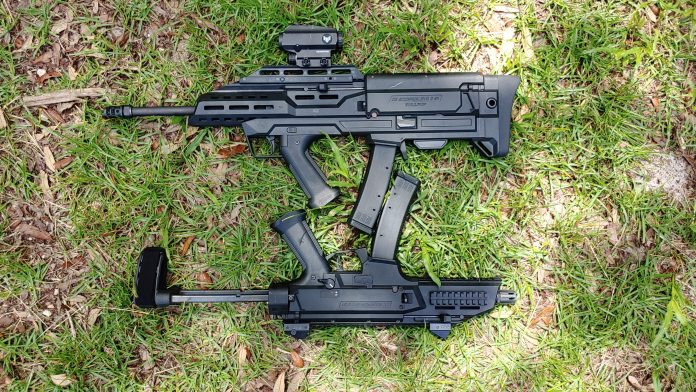
[Editor’s Note: Travis’ post didn’t feature quite enough Scorpions so…
…End Editor’s Note]
Bullpup is a fun term that goes beyond that NFAC guy’s looney and incorrect rant. One of my favorite lines regarding bullpups is that they “Are the gun of the future, and always will be.” If there is a better way to praise and insult a firearm type, then I haven’t heard it. The bullpup rifle is controversial, misunderstood, and their military service has been met with some contentious results. However, they remain a feature in the gun industry, and every year we see more and more rise up.
What’s a Bullpup?
The origin of the term bullpup is not set in stone. In fact, for many years, no one really knew where it came from. April 2020 delivered us a video from Forgotten Weapons featuring British firearms historian Jonathan Ferguson. The term bullpup was used in the 30s to describe bulldog puppies. The analogy comes from the fact that both types of bullpups are described as small, squat, ugly, but aggressive and powerful. This is the most likely source of the bullpup name.
Bullpup was also a name the United States applied to the first guided air to surface missile in use by the military and applied to precision target pistols, but it has since fallen out of favor for both.
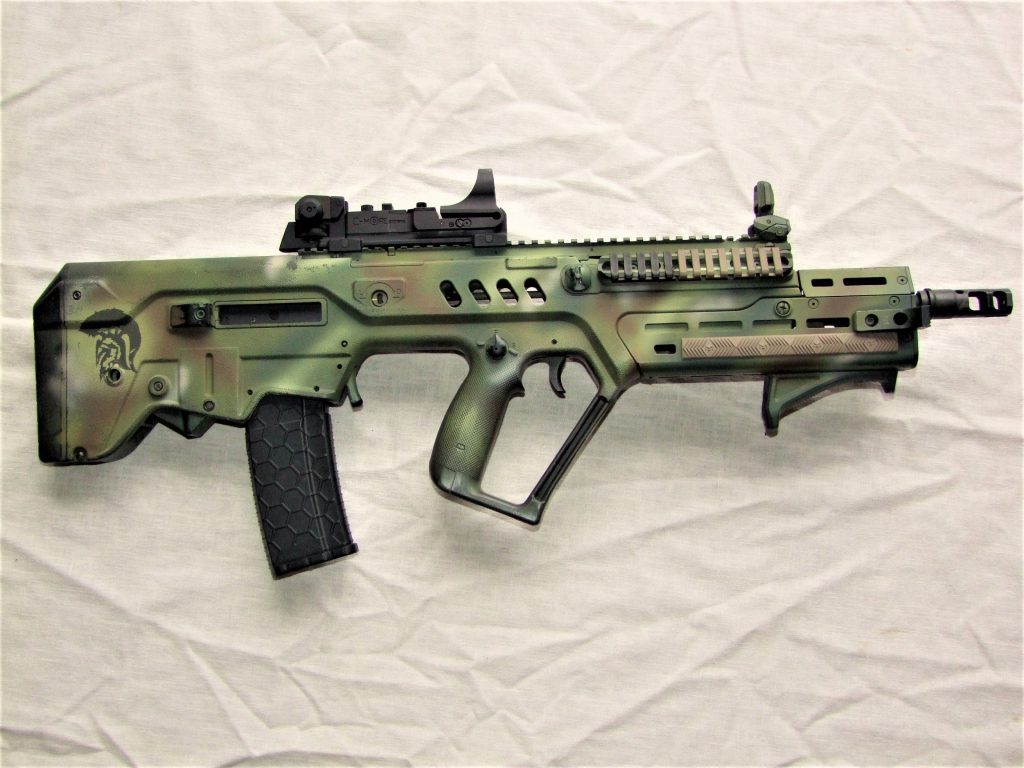
Bullpups often appear futuristic in design, but bullpup military rifles go all the way back to 1901 with the Thorneycroft carbine. Bullpup rifle designs come in a few different configurations, but the most common feature tying them all together is the design places the action of the weapon behind the trigger.
This results in a platform that’s much smaller than most. As you can see here, we have a Scorpion pistol with a brace and a 7.72-inch barrel compared to a Scorpion rifle with a 16-inch barrel and stock in a bullpup configuration. The rifle is only 26.25 inches long overall and is just a bit longer than the pistol variant and brace even though it has double the barrel length.

The bullpup configuration shaved off nearly 10 inches from the standard carbine variant. Bullpup rifles deliver a shorter and handier package than a full-sized rifle. In fact, they deliver a weapon the same length as an SBR without the necessary tax stamps.
Why Are They Disliked?
The immediate advantages are quite apparent. However, bullpup rifles often get the short end of the stick with plenty of detractors in the civilian and military community. A lot of the poor reputation bullpups get come from two famed European service rifles, the French FAMAS, and the British L85.

Both of these bullpup rifles were marred with issues in their service life and took decades to straighten out. These two rifles are often cited as some of the worst service rifles of the modern age, and their country’s stubborn refusal to seek a new rifle drove their Commando troops to AR-style platforms. Sadly this reputation ignores the great success the Steyr AUG saw with numerous defensive forces around the globe and the state of both rifles today.
In recent years bullpup rifles like the Tavor series and VHS have proven more successful than most, and the AUG continues to serve around the world.
The Advantages
The obvious and aforementioned advantages are the overall length and barrel length ratio. A rifle can have a 16, or even 20 inch barrel and remain incredibly compact. While that’s less important with the 9mm Scorpion, with rifles in 5.56 the more barrel the better.
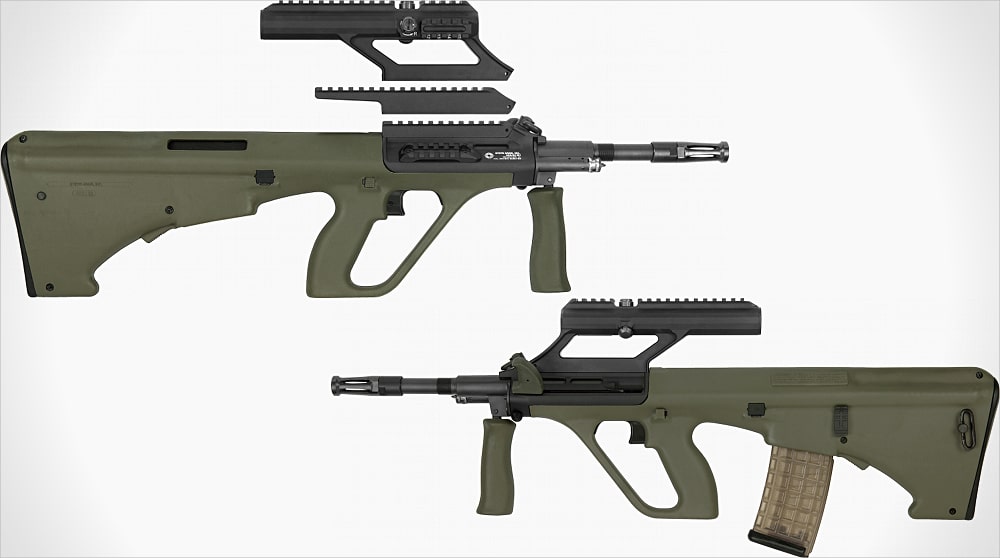
There are also some legal advantages if you want a rifle with a compact design, but you don’t want a tax stamp. A Mk18 rifle is 26.75 inches long with the stock collapsed, and as we mentioned above, the Scorpion is shorter at 26.25 inches. Rifles like the AUG with 16-inch barrels are a mere 28.15 inches. It’s an SBR sized package without the SBR required stamp.
Practical Advantages
Shorter guns are handier for close-quarters shooting. Bullpup rifles can maneuver around corners, through doorways, and in and out of vehicles with ease. On top of that, the longer barrel reduces muzzle flash, concussion, and a good bit of noise associated with short-barreled rifles. They tend to make excellent suppressor candidates for these reasons too.
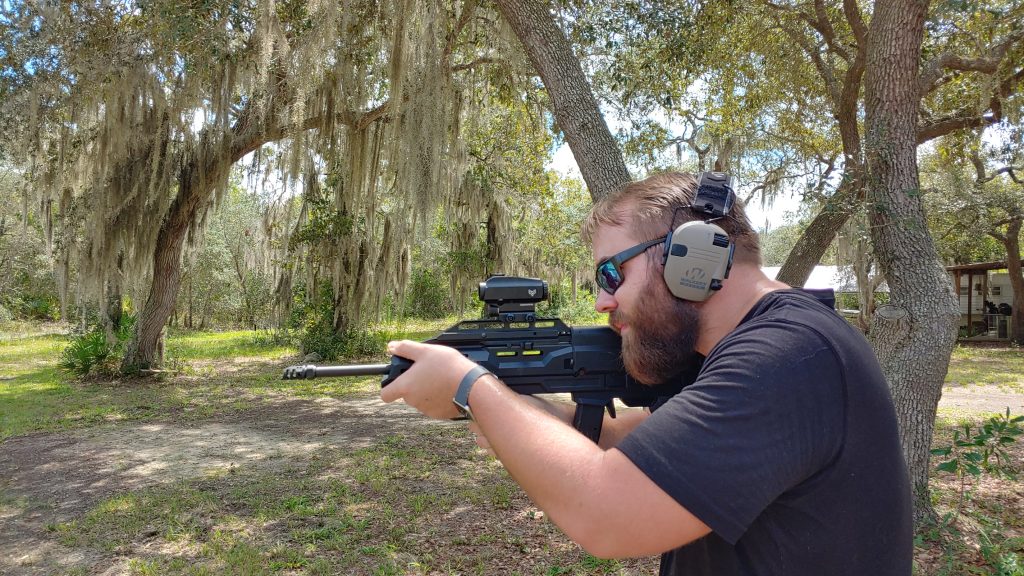
There are also some handling advantages, many fail to mention how a bullpup handles compared to a standard rifle. The design and shorter overall length puts the center of balance is to the rear, into the shooter’s shoulder. The Scorpion bullpup moves faster to my shoulder and up and on target faster compared to a standard configuration Scorpion.
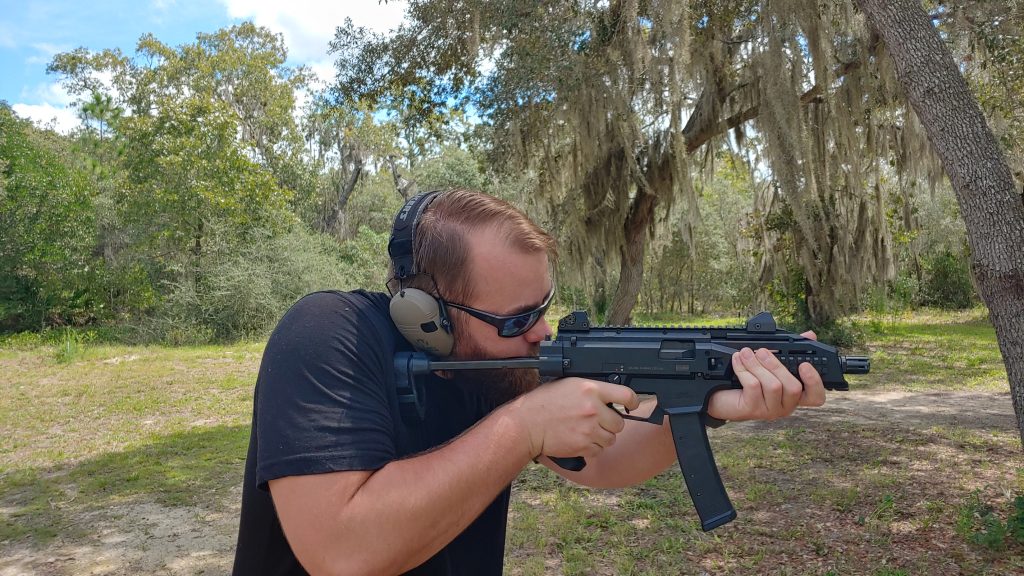
Moving between targets also feels faster and more intuitive with less momentum and leverage carrying the weapon off target. Snapshots, box drills, and even the Eleanor drill from Sage Dynamics are easier to accomplish with the bullpup Scorpion than the standard pistol model.
Disadvantages
Models like the bullpup Scorpion are not exactly left hand friendly. However, not all pups hate lefties. In fact, many are convertible for left-handed use like the AUG and Tavor. The PS90, FS 2000, and KelTec bullpups eject shells into neutral space instead of left or right. Modern bullpup variants keep lefties in mind.
Misunderstandings
There are also lots of misunderstandings reported as bullpup detractions. They all have a little facet of truth to them, but with a healthy dose of personal preference and bias thrown on top.
The first and most prominent is the ‘crummy’ trigger situation. A bullpup trigger’s complexity, and thus feel, is caused by the trigger linkage necessary to place the trigger forward of the action. On some guns like the bullpup Scorpion, the non-bullpup trigger is crummy to begin with so not much is lost. While the Scorpion isn’t an impressive trigger, that doesn’t mean bullpups universally have crappy triggers.
The KelTec RDB and K&M Arms M17 both sport fantastic triggers. Trigger upgrades for the Tavor and Steyr AUG also bring them into the same vein as AR-type rifles. Bullpup triggers have come a long way and continue to improve by leaps and bounds.
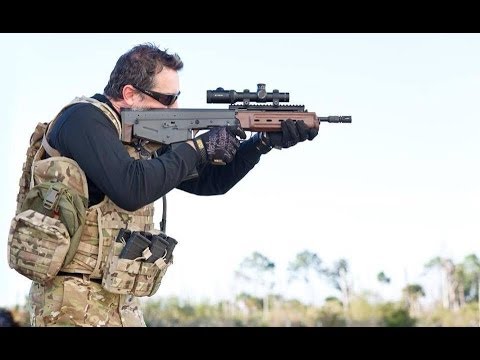
Swapping shoulders is often said to be difficult, if not impossible, with a bullpup. It’s simply not true. Although the techniques may vary, swapping shoulders is possible with a bullpup rifle. I prefer to use a technique where I switch shoulders but leave my hands in the same place. It’s faster and more intuitive, but a traditional shoulder swap still works with most bullpups.
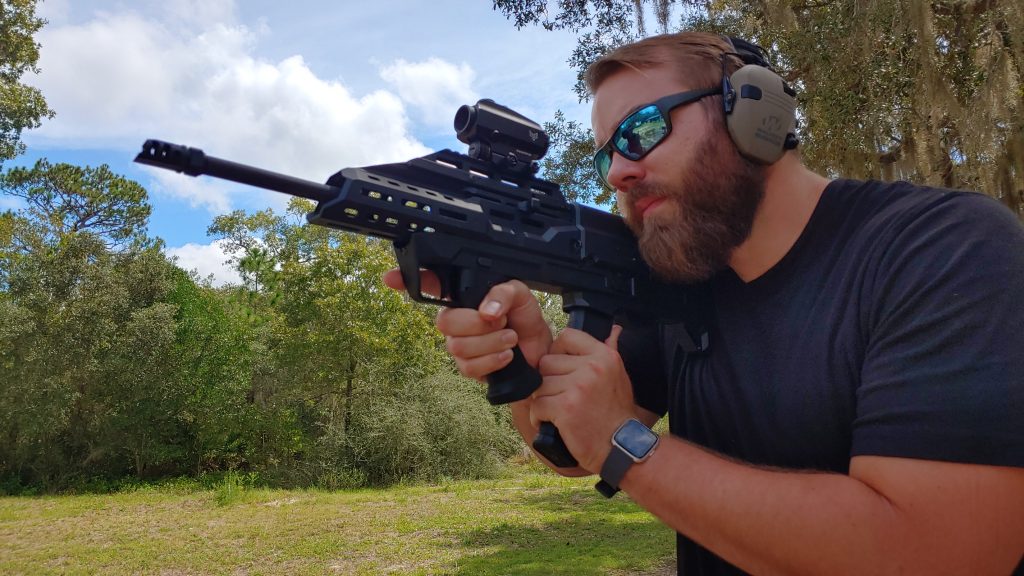
Last but not least is reloads. Slow is relative, and bullpup reloads are not slow to the trained hand. You can be a bit faster with emergency speed reloads with a traditional rifle. However, a bullpup only lags behind a hair for this specific reload technique. A shooter experienced with a bullpup can be quite quick. X95 users often find themselves faster on reloads with the bolt release location.
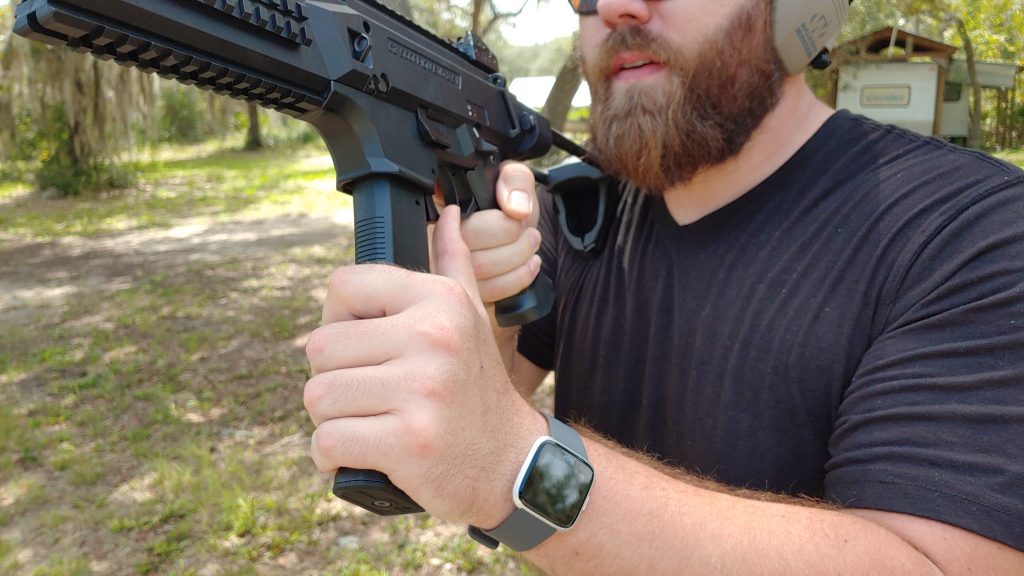
When running the Bullpup Scorpion side by side with a traditional Scorpion, a reload with retention takes nearly the same amount of time. A speed reload is quicker with a standard Scorpion, but hardly enough to matter unless we count Instagram.
The Bullpup Life
Bullpup rifles are fascinating and efficient designs that pack a lot of punch in a small package. Bullpups are not for everyone, but they do offer significant advantages over more traditional firearms. These pups might not be the future, but they are far from being described in the past tense.



